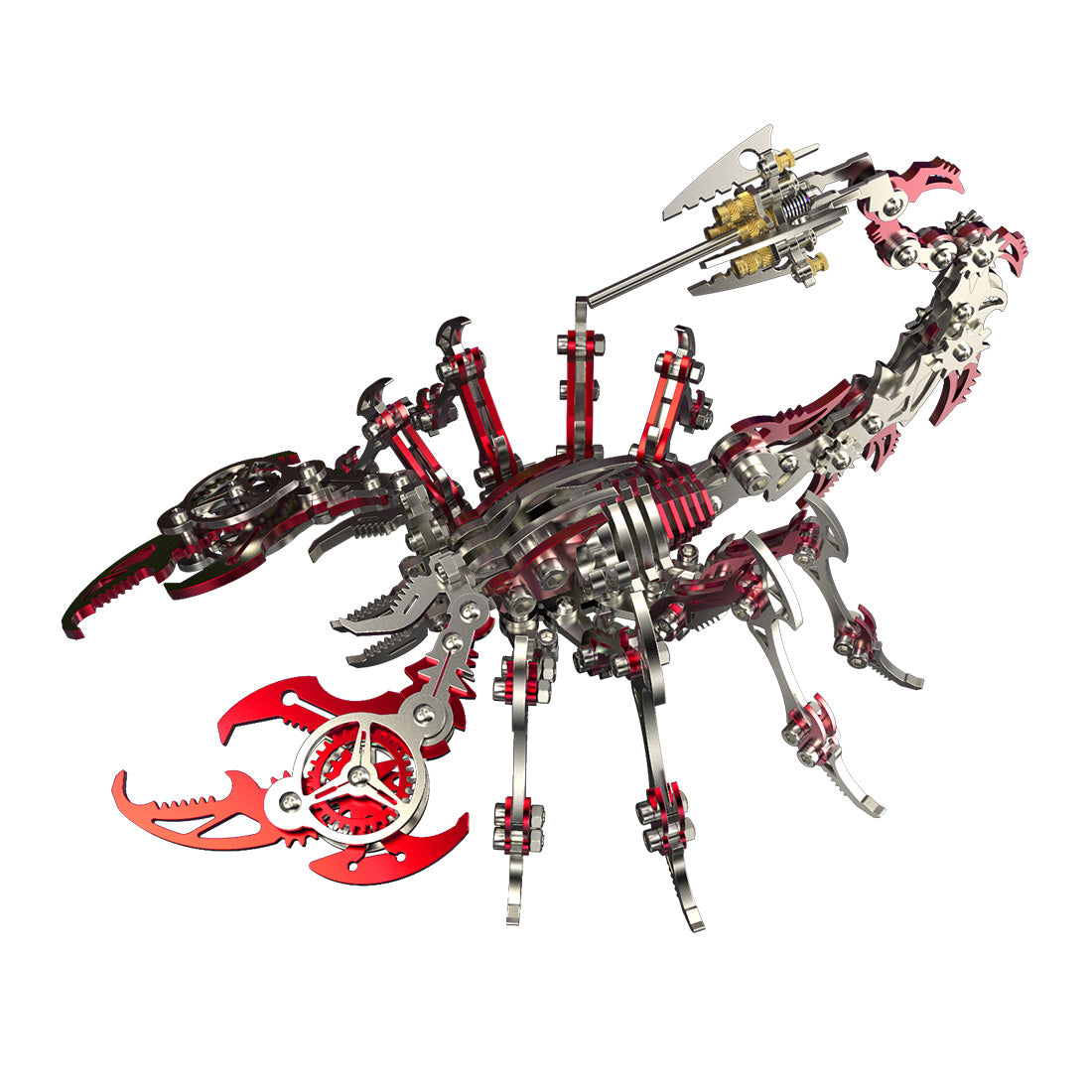What's Anglerfish?
Anglerfish are a group of fish that are characterized by their elongated bodies and the presence of a dorsal spine that protrudes from the head and bears a fleshy lure at the tip. This lure, known as an esca, is used to attract prey, which the anglerfish then captures with its sharp teeth. The spine is tipped with a bioluminescent bulb, which the fish can control to flash on and off. Smaller fish are attracted to the light, and when they get close enough, the anglerfish snaps its jaws shut, capturing its unsuspecting prey. Anglerfish are also seen in a few common Video games, Animation series, and movies, usually as some sort of eerie creature due to their characteristic appearance.

Anglerfish are found in deep oceanic waters and are particularly well adapted to living in the extreme conditions of the deep sea, where they are able to survive in complete darkness and at crushing pressures. They are also known for their highly unusual mating behavior; in many species, the males are much smaller than the females and physically fuse to the females, becoming nothing but sperm-producing organs.
how big is an anglerfish?
Anglerfish come in various sizes, with deep-sea species typically growing to around 1 meter (about 3.3 feet) long, roughly the size of an average adult human from head to waist. They are best known for their eerie appearance, with a bioluminescent lure on their heads, which they use to attract prey in the dark depths of the ocean.
However, some species grow much larger. The giant anglerfish (Melanocetus johnsonii), for example, can reach up to 1.5 meters (about 5 feet). This is roughly the height of a tall adult or a standard basketball hoop. Despite their large size, these creatures are rarely seen due to their deep ocean habitat, usually found at depths greater than 200 meters.
There may be even larger varieties of anglerfish, but these species mostly inhabit remote, deep ocean regions, where conditions are dark and the pressure is extremely high. The size of these fish helps them survive in such harsh environments. While no larger anglerfish have been discovered so far, the deep ocean remains a largely unexplored frontier. As scientists continue to explore, it’s possible that even bigger anglerfish or other unknown deep-sea giants could be discovered in the future.
Here are a few "funny" things about anglerfish:
1. Their "fishing rod" or illicium, is a modified dorsal spine that extends from their forehead and is used to lure prey. The bulbous tip of the spine is bioluminescent, which can make it look like a tiny lightbulb attached to its head.

photo from wired.com
2. Anglerfish have a unique mating behavior that is often described as "romantic" in a figurative sense, but not in a conventional way. The way that males attach to females in certain species of anglerfish, is quite amusing and makes one think of a forever-attached couple. in some species, the males are much smaller than the females and have a modified dorsal fin that they use to bite onto the female's skin. They'll stay attached to the female for the rest of their life living off the female's blood vessels and also fertilizing the eggs when the female lay them. This way of reproduction is called parasitism reproduction.
3. In many species of anglerfish, the males are much smaller than the females and physically fuse to the females, becoming nothing but sperm-producing organs. This is known as "sexual parasitism" or "induced monofacty" in scientific terms. This behavior is unique to anglerfish and it is thought to be an adaptation to the low population density and scarcity of potential mates in their deep-sea habitat. This unusual mating behavior is often described as "romantic" in a figurative sense because it is a unique, intimate and extreme form of adaptation, which can be seen as a way that the fish have found to ensure the continuation of the species in their challenging environment.

photo from worldatlas.com
4. It's also worth noting that many people might not see this behavior as romantic at all and can find it grotesque and unappealing. Everyone has different perspectives and interpretations of things.
5. Some Anglerfish has a distinct character that makes them look like it is permanently surprised or sad, due to their large eyes and the protruding illicium.

Deep Sea Angler Fish. ScienceWorks. Melbourne. @Ian from Flickr
6. Anglerfish are also known to have a big appetite, they can swallow prey that is larger than their own body. Some people may find them fascinating as an example of adaption in an extreme environment and an animal that finds a way to survive in the depths of the sea. They can be seen as a symbol of the unknown and the mysterious, in a way that inspires curiosity and wonder.
7. The North Atlantic, the North Pacific and the Antarctic Oceans have most of the known species of anglerfish, however, due to their habitat, it's challenging to know how many of them are living in a specific area, or how many species of anglerfish are undiscovered. Some species, like the anglerfish from the family Ceratioidae, are known to occur worldwide, while others are found in specific regions or habitats.
In terms of fisheries and commercial anglerfish catches, countries like Japan, Russia, China and Norway are the countries where anglerfish are fished in commercial quantities. However, the numbers of anglerfish caught by these countries may vary from year to year, depending on a variety of factors including population density, fishing regulations, and market conditions.
It is worth noting that anglerfish populations are considered to be vulnerable to overfishing and many species are considered to be in danger of extinction by the IUCN, so it is important to make sure that fishing is done in a sustainable way.
Anglerfish are caught by people for a variety of reasons, mainly for food and commercial trade.
In some cultures, anglerfish are considered a delicacy, and their meat is valued for its taste and texture. Their liver and roe are also edible and considered a delicacy in some areas. They are often used in stews and soups, and sometimes fried, grilled or pickled.
In addition to being used as a food source, anglerfish are also caught for their commercial value. Anglerfish liver oil is rich in vitamins A and D and is used as a source of these vitamins in the pharmaceutical and nutritional supplement industries. In some regions, anglerfish are also used as bait for other commercial fish species like tuna.

Johan Mikkelsen with a nice monkfish caught with a Savagear lure (www.savage-gear.com)
Some anglerfish species are also used for scientific research, to help understand the behavior, adaptation and conservation of the deep-sea fauna.
It's worth noting that the fishing industry for anglerfish is considered by some scientists as unsustainable, due to the challenges of fishing at such deep water levels, which is difficult and expensive, but also due to the biology of the fish themselves. Anglerfish are known to have a low reproductive rate and a long lifespan, so fishing can have a significant impact on the population. Also, due to the challenges in studying their habitat, researchers have a limited understanding of the total population and how much fishing can be sustainably done. So, it's important to make sure that the fishing of these creatures is done in a sustainable way to conserve the population.
why artists like anglerfish?
Anglerfish have an unusual and distinctive appearance that makes them a popular subject in art, both in traditional forms such as paintings and sculpture and in digital and new media forms such as animation and video games.

by artist @Nik Burns
Their bioluminescent lures and sharp teeth add to their eerie and unusual look. The deep sea habitat, mysterious and not well known to humans, with its unique fauna, which includes the anglerfish, is a source of inspiration for many artists. The atmosphere of the deep sea is a great opportunity to create something fantastical and otherworldly, which can be an exciting challenge for many artists.
Also, their unique and strange mating behavior, where males fuse to the females, provides a conceptually rich subject for artistic representation, interpreted in a variety of ways, the concept of fusion, dependency, or symbiosis are just a few examples.

In other words, the Anglerfish's unusual appearance and biology, combined with the mysterious and fantastical atmosphere of the deep sea make it a fascinating subject for artistic expression, providing a wealth of inspiration for artists to create interesting and unique works.

Anglerfish trap (by SKURK at Rå Skole in Bergen, Norway)
Anglerfish have a unique and unusual appearance that can be off-putting to some people. Their elongated bodies, protruding dorsal spines, and sharp teeth can make them seem menacing or even terrifying to some. Also, their habitat in the deep sea, combined with their bioluminescent lure, which is used to attract prey, can make them appear eerie and otherworldly.

















